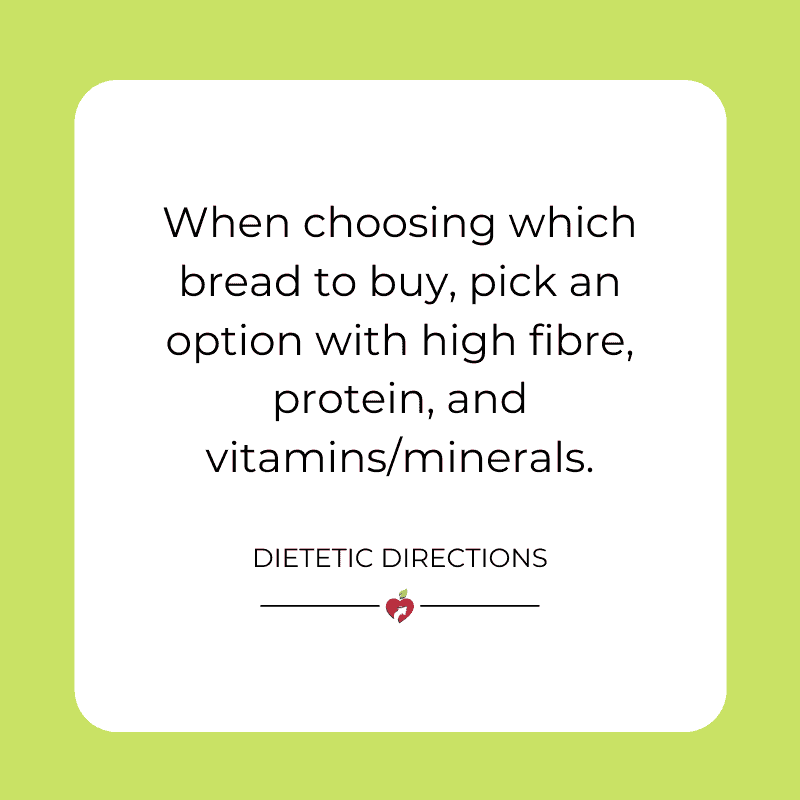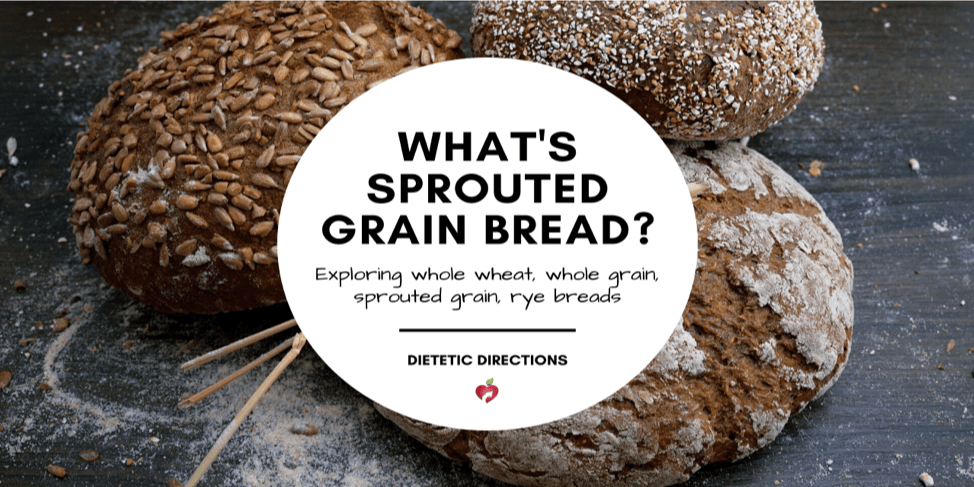
Sprouted Grain Bread Nutrition
Have you wondered, “What is sprouted grain bread?” It’s at the grocery store, but we know those aisles are confusing with endless variety and selection. When it comes to bread, what should we choose? White, whole wheat, whole grain, rye, sourdough, or gluten-free, and now there’s sprouted grain bread! Today, we’ll discuss what sprouted grain bread is, and I’ll break down the nutrition and compare the most common types of bread to help you ‘rise’ to the answer.

Let’s explore and compare whole wheat, whole grain, sourdough, rye and sprouted grain breads!
Anatomy of a Grain Kernel:
First, in order to distinguish different breads, it’s important to understand the different parts of the grain that are either removed or left intact in the final loaf.
Whole grains are the entire seed (aka kernel) of a plant. The whole grain is made up of three parts – the bran, the germ, and the endosperm.
The bran is the outer layer and contains the largest amount of fibre, antioxidants and B vitamins.
The germ is the embryo, which has the potential to sprout into a new plant. It contains B vitamins, unsaturated fats, antioxidants, and some protein.
The endosperm is in the middle layer and makes up the majority (83%) of the kernel weight. As the plant’s food supply, it makes the plant grow. It contains mostly protein and carbohydrates with small amounts of B vitamins, iron and fiber.
Discover how #SproutedGrain #bread differs from whole wheat, whole grain, sourdough bread and more. #dietitian #sproutedgrainbread #nutrition Share on XWhat is Sprouted Grain Bread?
Sprouted grain bread is made from whole grains (i.e., wheat, millet, rice, barley, spelt, etc.) and sometimes legumes (lentils and/or soybeans) that have begun to sprout or germinate. Therefore, whole grain consists of the bran, the germ, and the endosperm. Sprouting occurs with suitable moisture and warmth before the grains are processed and baked into the final loaf.
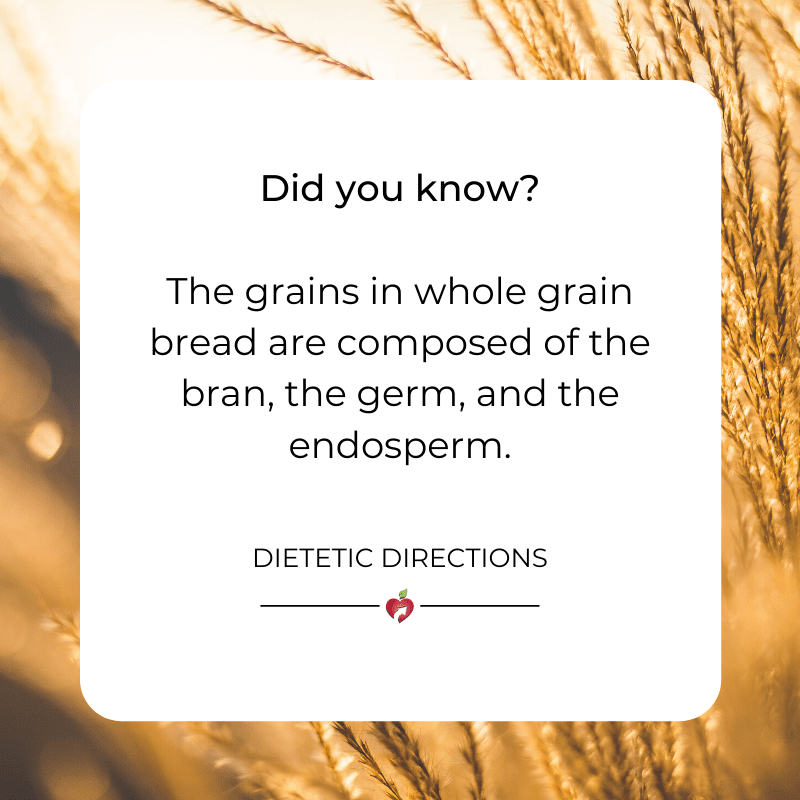
Ezekiel bread is a type of sprouted grain bread that contains sprouted whole grains as well as sprouted legumes.
How is Sprouted Grain Bread Unique?
The main difference between sprouted grain bread and unsprouted grains is the germination process and a corresponding boost in nutrition. Germinated grains absorb water so some of the starch breaks down, and then nutrient availability and absorption often improve. This is because germination decreases phytic acid, which in turn decreases the absorption of vitamins and minerals in the body. As a result, sprouted grains generally have more vitamin C, magnesium, iron, zinc, folate, and protein than unsprouted grains.
For example, iron absorption in sprouted grain bread can be increased by up to 50% due to germination and a decrease in phytic acid (known as an anti-nutrient because it decreases absorption).
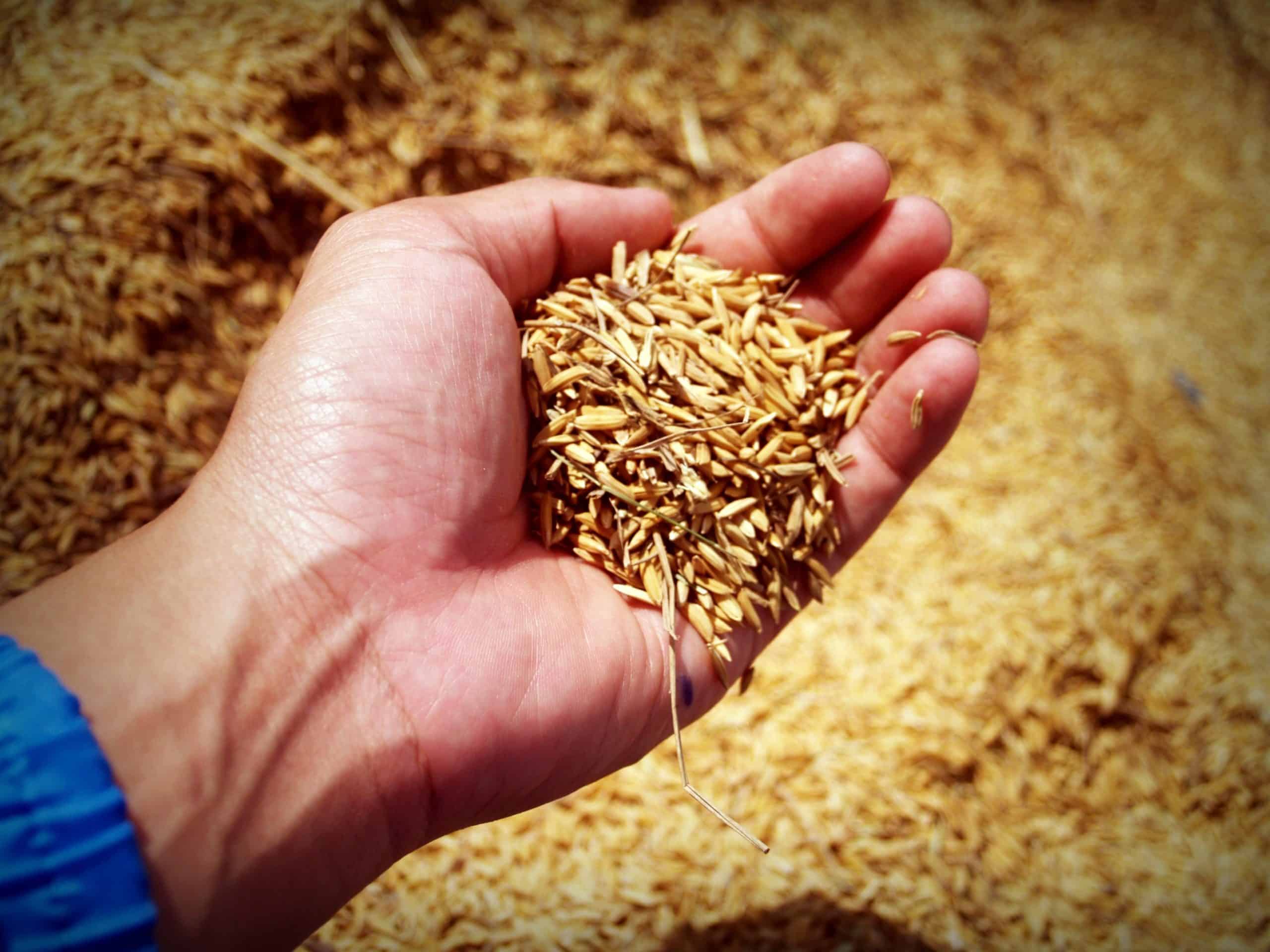
You can find sprouted grain bread at the grocery store, at farmers’ markets or at health food stores. Sprouted grain breads have fewer preservatives and will go bad faster, so they are often found in the refrigerator or freezer section. Be sure to check the ingredient list to see how many of the grains are sprouted (don’t assume it has 100% sprouted grains).
Benefits of Sprouted Grain Bread
- Higher fibre with approximately 4 to 6 grams per slice.
- Higher protein with approximately 5 to 6 grams per slice.
- Better for blood sugar control (lower glycemic index) because of higher fibre and protein.
- Lower in calories because grains absorb water during sprouting.
- Higher in B vitamins such as folate, as well as vitamins C, E and beta-carotene, which were barely detected in dry, non-germinated grains.
- Higher in iron due to less phytic acid which decreases absorption.
- Improved antioxidant activity in sprouted grains.

What About Other Breads?
What is White Bread?
White bread typically refers to wheat breads with the outer bran and germ removed during milling process leaving the starchy endosperm. Without natural oils present in the whole grain, white bread has a longer shelf life and lighter texture. However, according to the Whole Grains Council, without the bran and germ, about 25% of a grain’s protein is lost along with much of the fibre and important vitamins and minerals.

According to the Government of Canada, certain vitamins (i.e. niacin, riboflavin, and thiamine) and minerals (i.e. iron) that were removed during milling enrich some white breads (known as refined grains). In Canada, manufacturers are also required to fortify white flour with folic acid. However, white flour still lacks some nutrients found in whole grain (for example, fibre and magnesium).
What is Whole Wheat Bread?
Whole wheat bread is not the same as whole grain bread. According to the Government of Canada, the production of whole wheat flour involves milling some of the fibrous bran and removing most of the nutritious germ to help reduce rancidity and prolong the shelf life. In order to be “whole grain” the entire original kernel needs to be intact. In some cases, the bread will say “100% whole wheat” to indicate that no other grains are mixed with wheat. Nevertheless, whole wheat bread is still higher in fibre, protein and several vitamins and minerals than white bread.
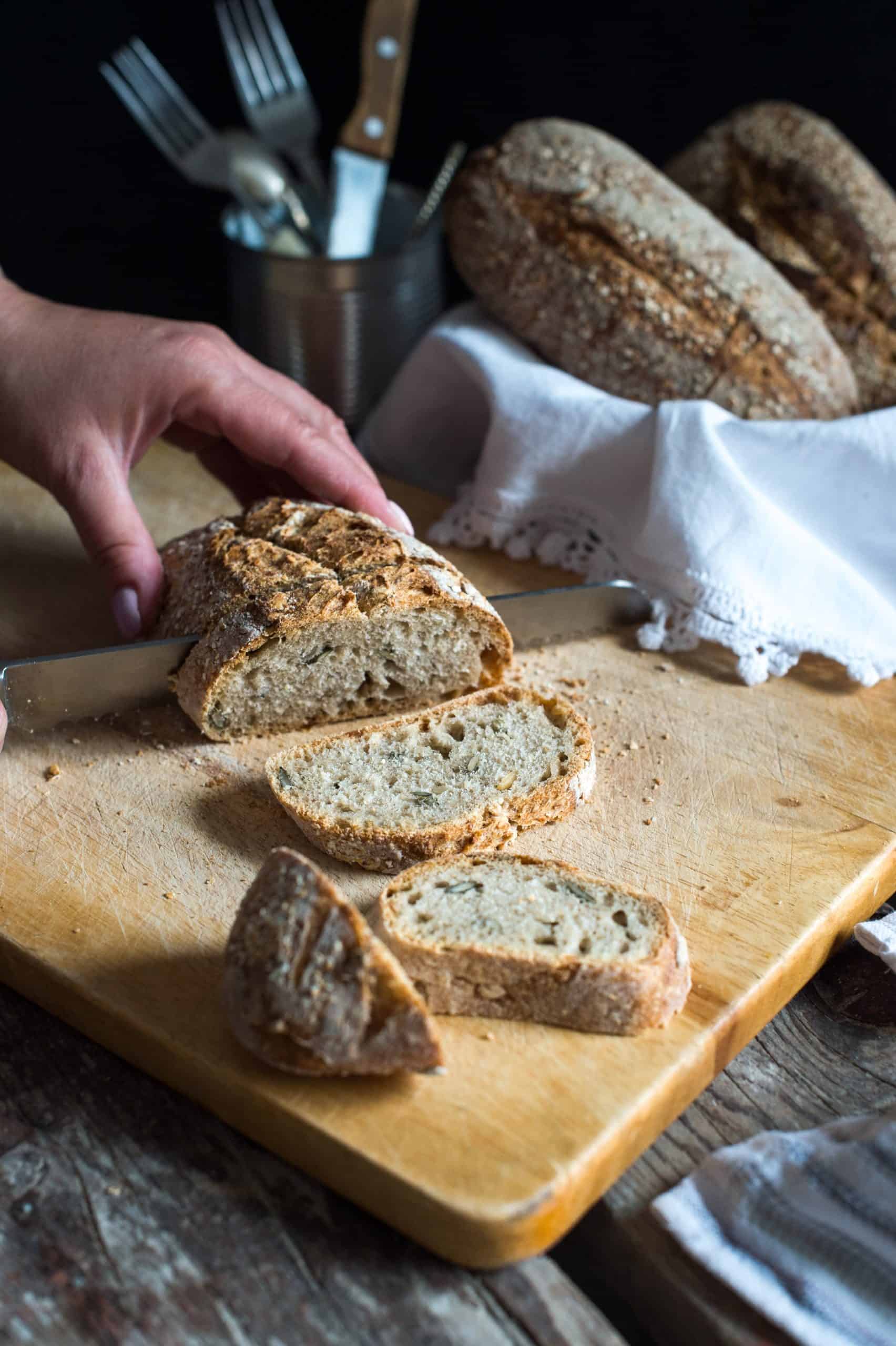
What is Whole Grain Bread?
Like sprouted grain bread, whole grain breads use the whole grain (such as the germ, bran, and endosperm) in the final loaf. This allows for added fibre, protein and vitamins naturally present in the whole grain over refined/white bread. In addition, whole grain breads can include other whole grains, such as whole barley, brown rice, whole grain oats as opposed to just 100% wheat. Therefore, look for “100% whole grain” to ensure it’s not a mix of whole and refined grains.
FYI: Research studies have found consuming whole grains helps decrease the risk of stroke, high blood pressure, heart disease, diabetes and certain types of cancer.
Canada’s New Food Guide also recommends we consume whole grains as part of balanced meals. Click here to learn more about what I think of Canada’s New Food Guide: Exploring the Pros and Cons.
What is Multigrain Bread?
This type of bread simply means that it contains more than one type of grain, such as wheat, oats, and quinoa. However, it does not necessarily mean that it’s made with 100% whole grains, as refined grains may be within the “multi-grains.” Be sure to compare the nutrition facts and read the ingredient list to look for higher fibre and protein, along with terms like “bleached” or “enriched,” which would mean bread has refined grains.
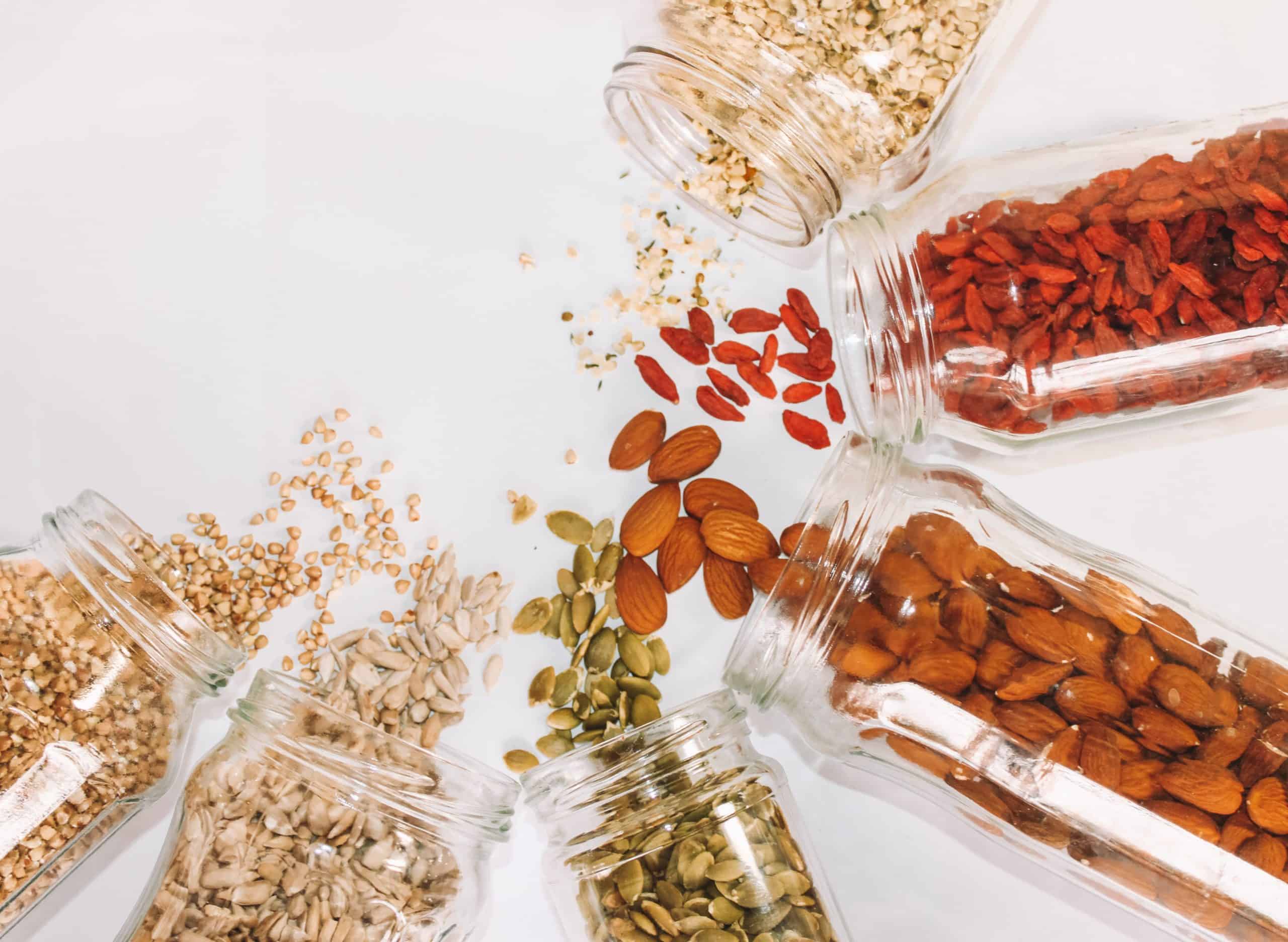
What is Sourdough Bread?
This is any type of fermented bread made using yeast and lactobacilli, which is naturally occurring bacteria. The fibre, protein and vitamin content of sourdough bread will vary depending on the type of flour or grain(s) used to make the bread. Some sourdough breads use either whole grains or refined grains, while some use a blend of both. Interestingly, sourdough bread has less phytic acid (like sprouted grain bread), which means the body more easily absorbs minerals like potassium, magnesium, and zinc.
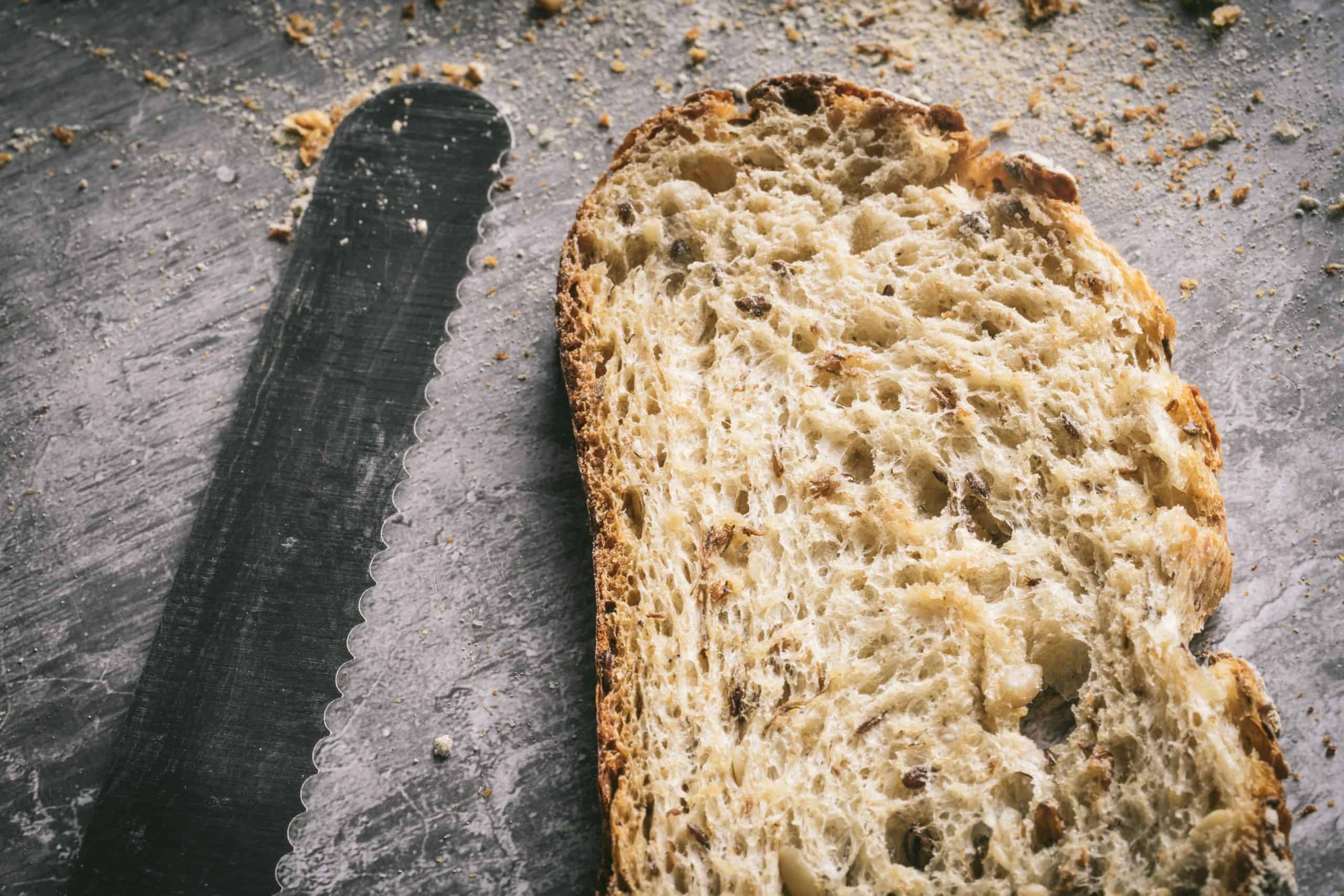
What is Rye Bread?
Rye is a type of grain in the wheat family. However, as with all breads, looking at the ingredient lists helps us determine if it’s a whole grain. Remember, the ingredients are in descending order with the first one being in the highest amounts. Unbleached flour, which is often used in rye bread, is refined and consequently lower in fibre, protein, and vitamins. Also, many rye breads are a sourdough mix.
What is Gluten-Free Bread?
Gluten-Free (GF) Bread does not have wheat, rye, barley or other forms of these grains. Appropriate GF flour substitutes include rice, potato, or corn flour, uncontaminated oats, teff, amaranth and tapioca, for example. Gluten-free loaves may be smaller in size, more crumbly and more dense. However, they are a a vital substitute for those with celiac disease and some on the Low FODMAP Diet. Be sure to compare the nutrition label on gluten-free breads to choose ones with higher fibre, protein and vitamin/mineral amounts. Finally, these breads are also kept frozen until use since they go bad quickly.

Dietitian Thoughts: Gluten-free options are vital substitutes for individuals with celiac disease as well as some individuals on the Low FODMAP Diet.
Which Bread Do I Choose?
When it comes to selecting breads, I generally recommend going for 100% whole grains and choosing loaves higher in fibre (better for heart health, blood pressure, blood sugar control and for feeling full for longer), as well as those higher in protein and vitamins/minerals. These may include sprouted grain breads, whole grain breads or multigrain breads. When comparing the nutrition facts of two bread loafs, ensure the serving size is consistent for same number of slices (i.e. per one slice and not per two slices). For example, are there four grams of fibre per one slice or is that per two slices? (There would really only be 2 grams fibre per slice.)
Using the Ingredients List:
Be sure to utilize the ingredient lists on the bread package to see if there are refined grains, whole grains or sprouted grain in the breads. I love sprouted grain breads for their increased fibre and protein along with the enhanced availability and absorption of several vitamins and minerals. However, sprouted grain bread is also generally more pricey, so go with what fits your budget. Here are my 7 tips to save money on groceries and still eat healthy.
Nutritionally speaking, sprouted grain breads are excellent and probably some of the highest for fibre, protein, and vitamin content. However, flexible eating allows you to include a variety of foods that you enjoy. In our Italian family, we traditionally eat white pasta and this can still constitute a healthy diet (hurray for that!). Canada’s Food Guide also suggests that half of our grains be whole grain which allows for flexibility in choosing a mix. Remember that mandatory fortification brings back nutrition to some of these white flours as well.

Choosing whole grains like brown rice, pastas, oats, bulgur at other meals can also boost nutrition in our diets. Bran cereals, chia seeds, beans and legumes can increase fibre, as well. Additionally, we can ensure adequate vitamins and minerals in our diets from food variety, mandatory fortification or vitamin supplements. Above all, speaking with a Registered Dietitian is helpful for considering all aspects of a diet to meet nutritional requirements. Click here to schedule an appointment with one of our dietitians.
Bottom Line:
The grocery store carries many different types of bread, including sprouted grain, wholegrain, white, whole wheat, rye, sourdough and gluten-free breads, to name a few. These breads will vary in the amount of the whole grain left intact (the bran, the germ, and the endosperm). Having more whole grains leaves the final product higher in fibre and protein along with B vitamins, iron, magnesium, and selenium. Additionally, when storing bread, I recommend using the freezer to ensure optimal freshness for use when ready. Nevertheless, aim to use up bread in the freezer within three to six months.
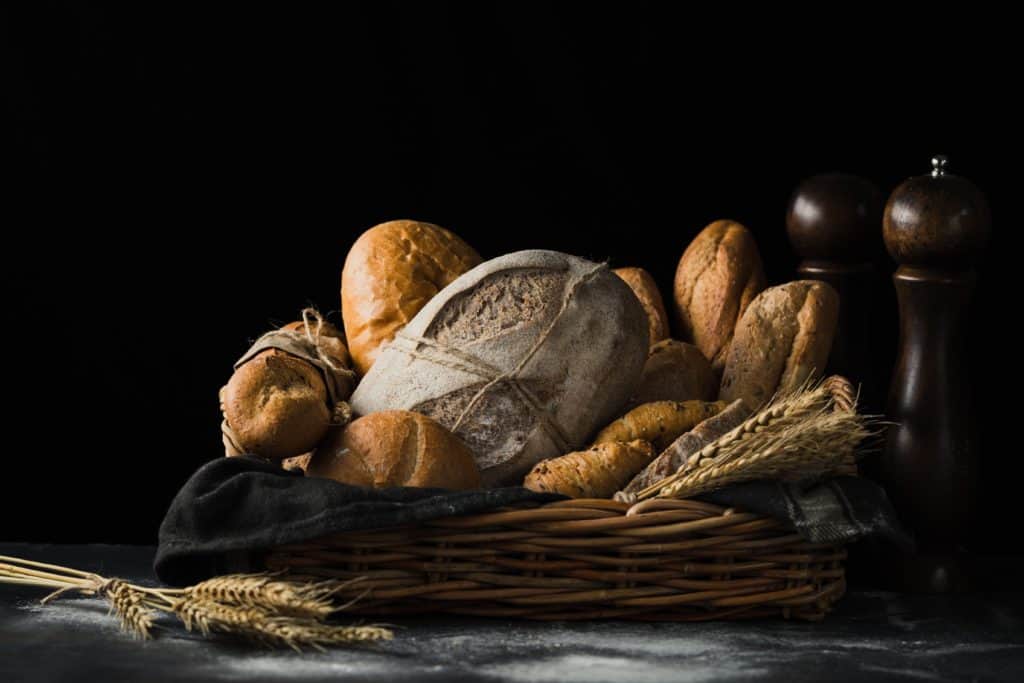
Now it’s your turn! Have you tried sprouted grain bread? What’s your go-to bread or bread choices? Did you know the difference between whole wheat and whole grain bread?



